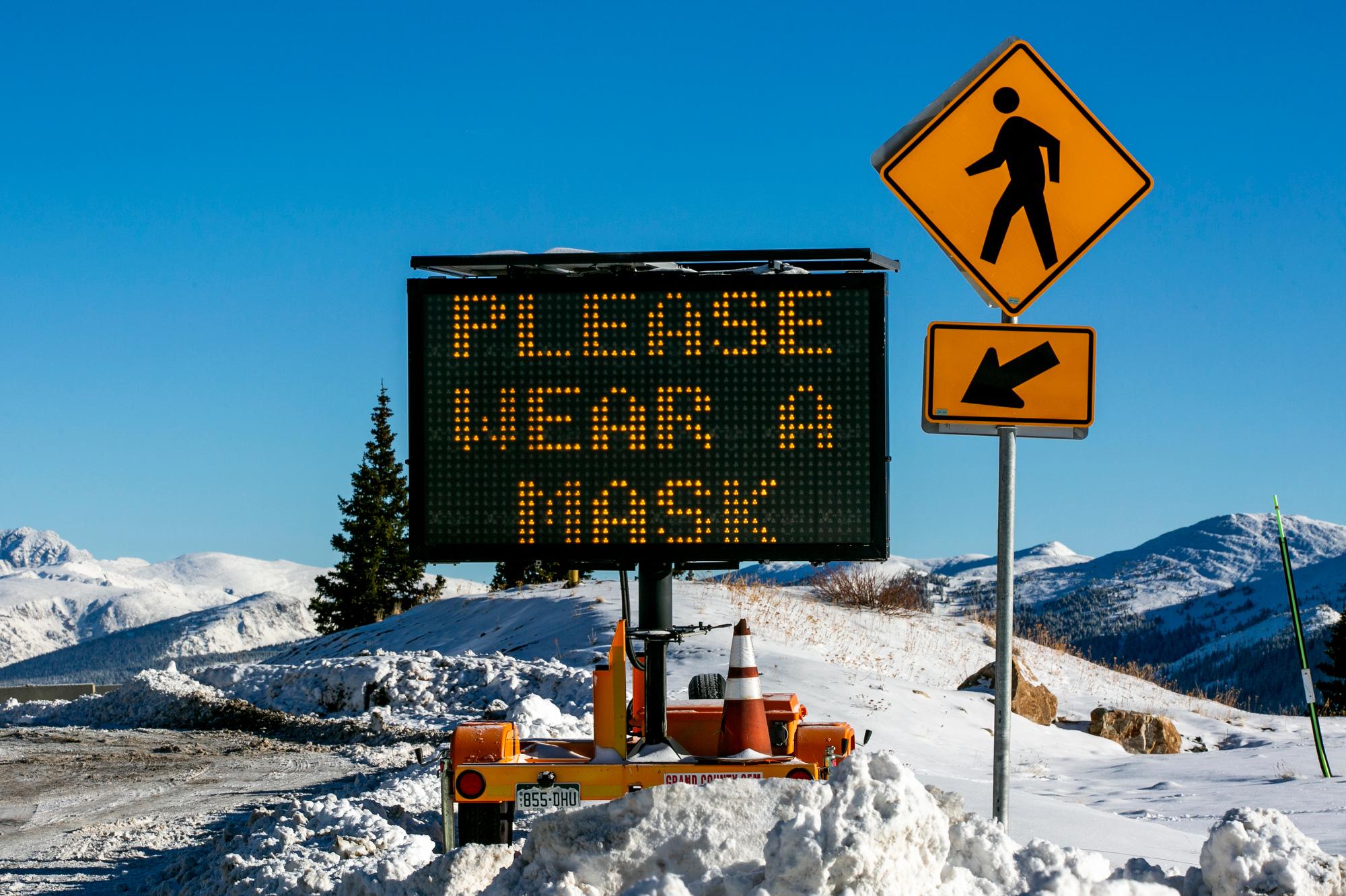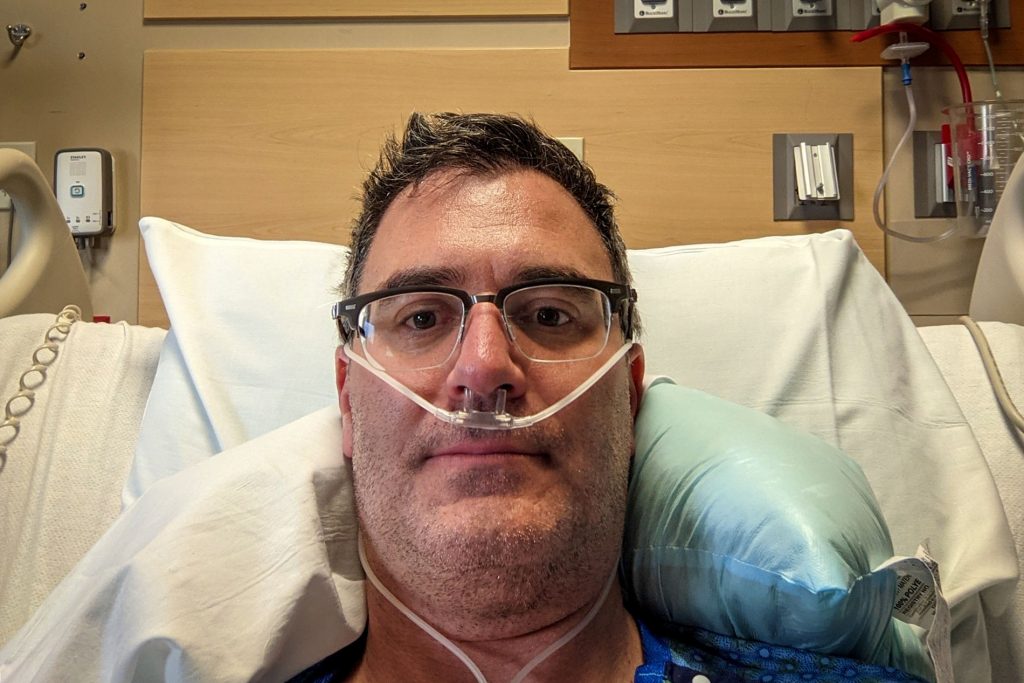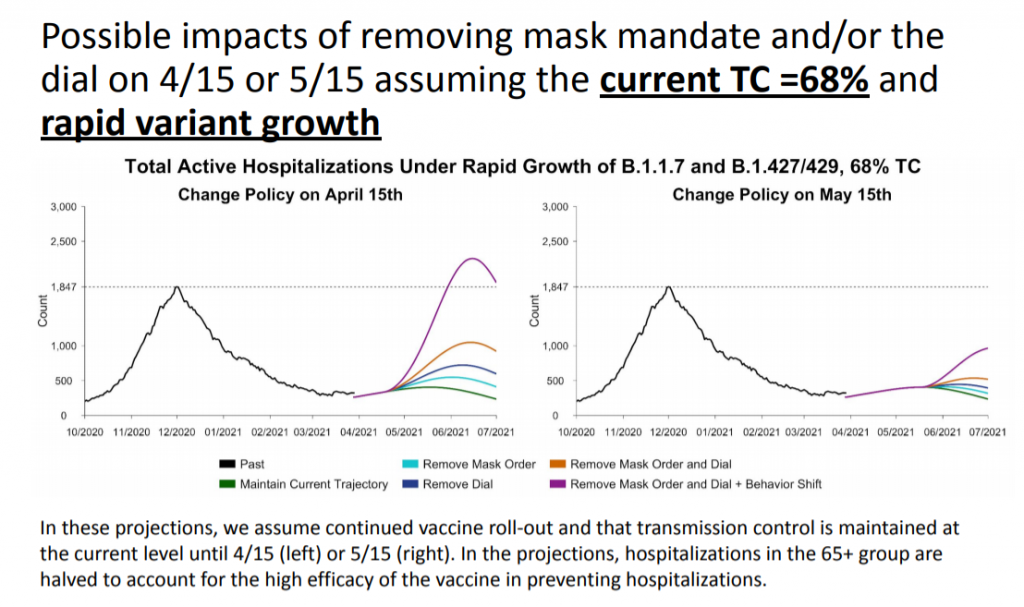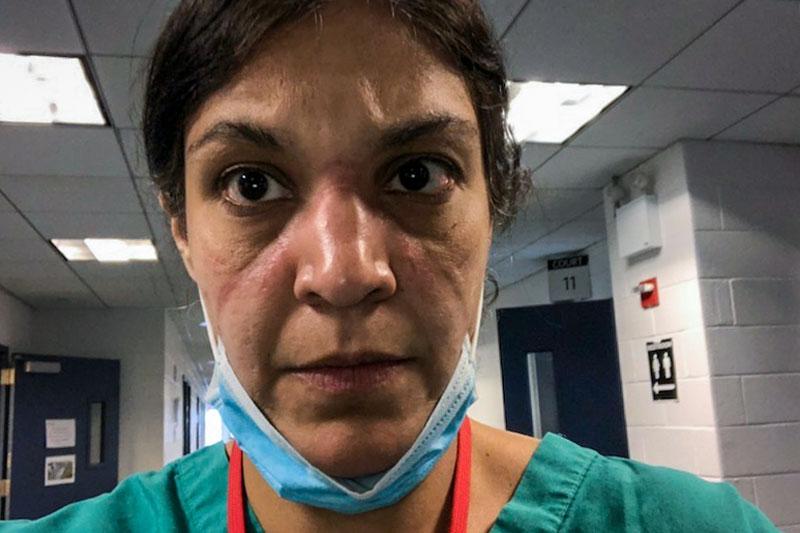
Aaron Weiss was 72 hours away from getting his first dose of the coronavirus vaccine when it hit.
He started feeling tired. That soon turned into “textbook COVID,” complete with a hacking cough, extreme exhaustion and what Weiss called the “worst flu you ever had.”
“Just absolutely brutal,” Weiss said. “Aches. Night sweats. Just everything hurt for about a week there.”

He and his family had been super careful for a full year of the pandemic, working from home and avoiding close contact with others outside their family bubble. But that still wasn’t enough for the 43-year-old Littleton resident to avoid two trips to the ER and then a 5-day stay in the hospital.
Weiss said he expects to get his first vaccine shot soon.
“My message to anyone is don’t mess around,” Weiss said the day he was released earlier this week. “This is no time to let your guard down. You don’t want to be a long hauler.”
And as of April 16, avoiding that fate is almost entirely up to you.
With the retirement of the color-coded state COVID-19 restrictions dial, state and local leaders are today steering Colorado toward a pandemic off-ramp. Whether that succeeds or fails will depend mightily on a few more weeks of personal responsibility and restraint from a restrictions-fatigued population.
The COVID-19 dial expires as cases and hospitalizations remain high.
Colorado’s key pandemic metrics remain a vexing mix of promising and worrisome. Cases have stayed persistently high and the state’s positivity rate is above the 5 percent level public health leaders watch closely. Hospitalizations are much lower than the fall surge, but they are near 500, much higher than a few weeks ago.
More transmissible variants continue to spread and are estimated to now make up a majority of new cases in Colorado.
Projections from the team at the Colorado School of Public Health spotlight a few possible routes. If people can avoid cutting loose and partying like it’s 1999 (or 2019 for that matter) and keep up with precautions like wearing masks and avoiding crowded indoor settings while vaccinations multiply, a smoother exit could be just up ahead.
“I think we can hopefully say the end is in sight,” said Dr. Jon Samet, an epidemiologist and the dean at Colorado’s School of Public Health, who directs COVID-19 modeling for the state.
The modeling, which is regularly shared with the governor, his team and local public health leaders, also maps out a much more dire scenario. Assuming rapid growth in COVID variants that are now the dominant strains in Colorado, plus removing the state’s mask mandate, its color-coded dial and a dramatic easing of voluntary precautions taken by the public, then Colorado coronavirus hospitalizations could eclipse early December’s peak of nearly 1,900 by late June.

And at least some, but certainly not all, of those elements are happening now. The state has eased its mask mandate, releasing rural counties with low incidence levels except for schools, government buildings and personal services settings, while the most populous counties keep some form of mandatory masks in indoor public settings.
When the state’s dial expires, counties in Green Level will likely drop it altogether, while most Front Range and rural resort counties maintain their own version of it for at least another month.
So that leaves a key part of Colorado’s trajectory up to the behavior of individuals.
“I think it's going to be an important month for us ahead. I think that's the bottom line. I think people, like it or not, just need to hang in a little bit longer, do the right stuff (to protect themselves and others),” Samet said. “Of course the most critical piece of personal action is getting vaccinated.”
What's Colorado's best-case scenario — and worst case?
Dr. John Douglas, executive director of Tri-County Health in Adams, Arapahoe and Douglas counties, said Colorado’s pandemic can go a couple of different ways from here.
“Well, I say in the Metro area, the off-ramp is one month of additional capacity restrictions, more and more vaccinations happen,” Douglas said. “Variants don't create unexpectedly bad headaches, and we get back to fully reopened in the middle of May.”
That’s the best case.
“Worst case is the opposite,” Douglas said. “And, you know, something comes along that makes all the great vaccination work we've been doing completely ineffective. And we began to see new infections, new hospitalizations and new illness.”
Douglas also envisions a possible middle route, where people at some point in the future need to get booster shots against coronavirus variants, as the head of vaccine maker Pfizer floated Thursday, and “things get transiently worse for a little while.”
But as more people get vaccinated, local communities and the state are able to keep things under control. Until, “we might have to move back to slightly reduced capacity for a while.”
Two major hurdles to fully vaccinating the population, both in Colorado and nationally, are a lack of access in some communities and a reluctance of some populations to get inoculated.
According to state-by-state data compiled by the Kaiser Family Foundation, the vaccination rate for Hispanic, Black and Asian Coloradans trails the white population. Some national polls have shown COVID-19 vaccine hesitancy dropping among all Americans. Still, another group is showing up in surveys as not yet ready to get vaccinated: Republican men.
Current hospitalization data shows some signs of vaccine hesitancy in the state. People 60 and older have been eligible for the vaccine for weeks, but still represent more than 40 percent of new hospitalizations for COVID-19 treatment. Some of those people may have been unable to get appointments before catching the disease or were deemed high risk for taking vaccines. Others may have simply chosen not to get a shot and then failed to adequately protect themselves.
In recent weeks, glitches in distribution appeared. Most prominently, the Food and Drug Administration and the Centers for Disease Control and Prevention recommended a pause on the usage of the Johnson & Johnson vaccine. The move came after the agencies said they were investigating six reported cases — none in Colorado — of blood clots in patients who had received the Johnson & Johnson vaccine. That’s out of about 6.8 million doses administered across the country.
The J&J vaccine was administered to just 133,315 people out of 3.4 million total doses delivered in the state, so the pause is unlikely to impact Colorado’s timeline for getting everyone 16 and older access to the vaccine by Memorial Day or sooner.
Entering a pandemic era where personal responsibility is more important than ever.
Dr. Comilla Sasson looks at the state of pandemic in Colorado with a mix of hope and trepidation, and wonders how the rest of the nation will fare.
Sasson has had the kind of up-close, frontline pandemic experience few can match. She’s an emergency medicine doctor working for Kaiser Permanente, Centura Health and the Veterans Administration Hospital, but also volunteered in a number of states over the last year, including New York, Texas, and California.

Sasson likes to use a skiing analogy. About eight weeks ago, with hospitalizations and community spread dropping she thought Colorado was easing down the pandemic curve. It seemed like working down a green run, “somewhere near Easy Street, where ‘hey if we can just coast down the catwalk’ and everybody gets vaccinated and we do everything right.”
Now, with Colorado’s numbers plateauing, and even increasing in some places, and the statewide color-coded dial going away, Sasson said there’s a lot more variability.
“It's probably somewhere between a black and a blue right now,” Sasson said. “I think that we're unfortunately kind of choosing the harder path for ourselves.”
With many older people getting vaccinated, a greater percentage of COVID-19 patients arriving in hospital ERs are younger, 20 to 50 years old, Sasson said. They may not die at the same rate as older people, but still run the risk of developing “long hauler” syndrome, with often-debilitating symptoms that continue long after they get released.
Plus, she said, even those under 16, who aren’t yet vaccinated, can and do get sick with coronavirus.
“That, to me quite frankly, as a parent, is probably the part that makes me most nervous,” Sasson said.
Sasson echoes the admonitions from the governor, Samet and other local public health leaders and agrees Colorado is entering a phase of the crisis where individual and collective behavior matters as much as ever.
“I do think we’re headed in the right direction,” she said, “if people still do the things we know work,” like wearing a properly fitting mask in public, especially indoors, keeping a distance and “making sure you’re fully vaccinated before you start hanging out with others without a mask.”
“I think it's a huge amount of personal responsibility,” Sasson said. “I think it's a huge amount of how much do you care for others and how much do you think your actions impact others?”
After getting vaccinated, some say they will continue wearing masks no matter what.
The scene playing out at vaccination locations around the state in recent weeks is downright upbeat. At the mass vaccination site at Dick’s Sporting Goods Park in Commerce City one recent weekend, Billy Wheelock and his wife Berna were pleased to have gotten their shots.
“Great, it was great. It was a good experience. It wasn’t bad,” said Billy Wheelock, a Denver resident and senior leader at a local fulfillment center. “I work as a central worker, so I felt it was necessary for me to do it. So I didn't hesitate to do it.”
Both said even after getting their shots they’d continue wearing their masks in public just to be safe. And that’s whether government officials advised them to or not.
“You have to do the necessary things to make sure that you're more safe,” Wheelock said. “Because everybody's not going to take the vaccine, you know what I'm saying? So you have to be aware of those people.”
Berna Wheelock said she’s a cancer survivor so she plans on being cautious, as the pandemic ideally winds down.
“I think that's a personal decision, but as for myself and being at high risk, I told my husband, I'm going to wear it regardless.”









